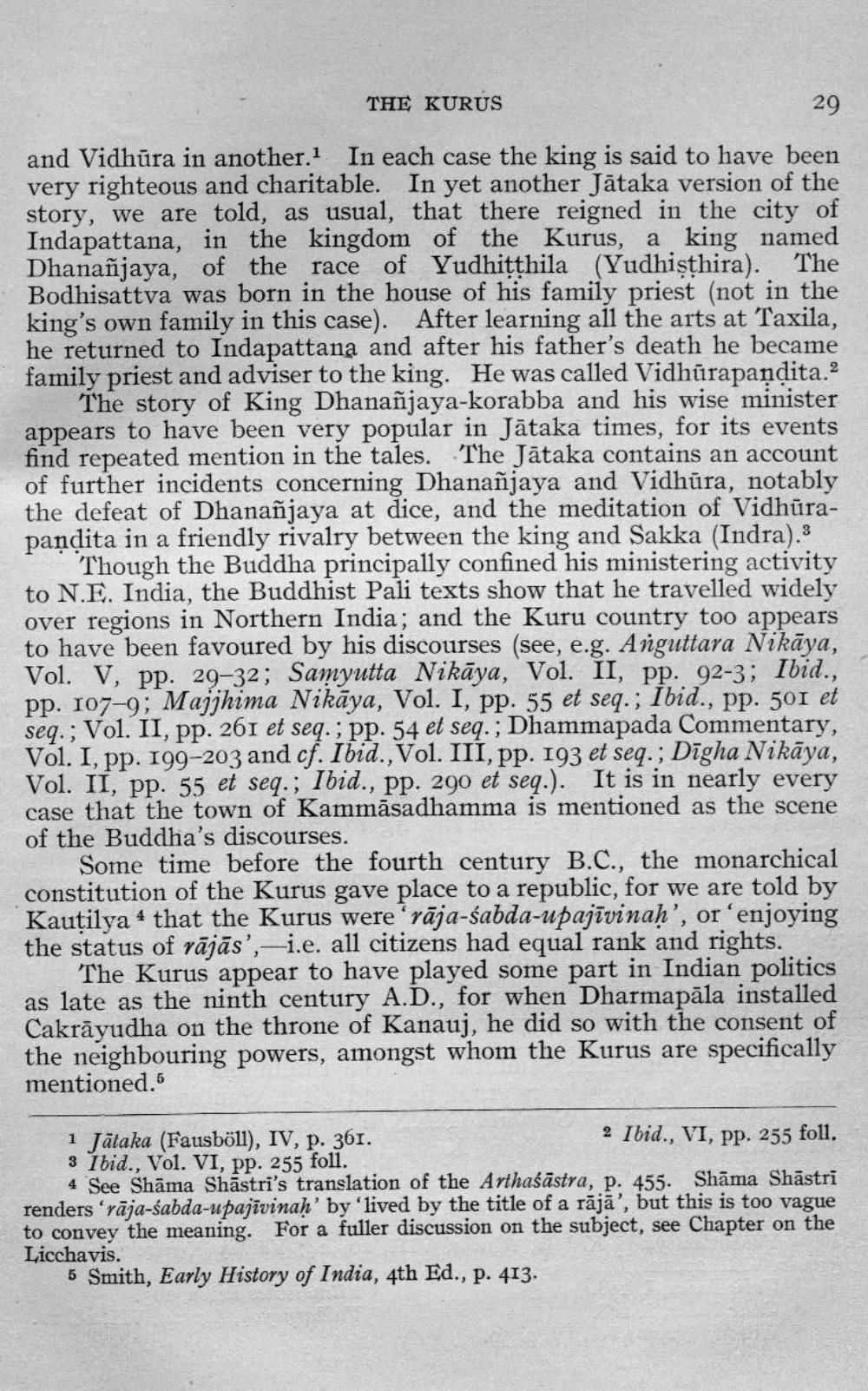________________
THE KURUS
29 and Vidhūra in another. In each case the king is said to have been very righteous and charitable. In yet another Jātaka version of the story, we are told, as usual, that there reigned in the city of Indapattana, in the kingdom of the Kurus, a king named Dhanañjaya, of the race of Yudhitthila (Yudhisthira). The Bodhisattva was born in the house of his family priest (not in the king's own family in this case). After learning all the arts at Taxila, he returned to Indapattana and after his father's death he became family priest and adviser to the king. He was called Vidhūrapandita.2
The story of King Dhanañjaya-korabba and his wise minister appears to have been very popular in Jātaka times, for its events find repeated mention in the tales. The Jātaka contains an account of further incidents concerning Dhanañjaya and Vidhūra, notably the defeat of Dhanañjaya at dice, and the meditation of Vidhūrapandita in a friendly rivalry between the king and Sakka (Indra).3
Though the Buddha principally confined his ministering activity to N.E. India, the Buddhist Pali texts show that he travelled widely over regions in Northern India, and the Kuru country too appears to have been favoured by his discourses (see, e.g. Anguttara Nikāya, Vol. V, pp. 29-32; Samyutta Nikaya, Vol. II, pp. 92-3; Ibid., pp. 107-9; Majjhima Nikāya, Vol. I, pp. 55 et seq.; Ibid., pp. 501 et seq.; Vol. II, pp. 261 et seq., pp. 54 et seq.; Dhammapada Commentary, Vol. I, pp. 199–203 and cf. Ibid., Vol. III, pp. 193 et seq.; Dīgha Nikāya, Vol. II, pp. 55 et seq.; Ibid., pp. 290 et seq.). It is in nearly every case that the town of Kammāsadhamma is mentioned as the scene of the Buddha's discourses.
Some time before the fourth century B.C., the monarchical constitution of the Kurus gave place to a republic, for we are told by Kautilya 4 that the Kurus were 'rāja-śabda-upajīvinah', or ‘enjoying the status of rājās', --i.e. all citizens had equal rank and rights.
The Kurus appear to have played some part in Indian politics as late as the ninth century A.D., for when Dharmapāla installed Cakrāyudha on the throne of Kanauj, he did so with the consent of the neighbouring powers, amongst whom the Kurus are specifically mentioned.
1 Jataka (Fausböll, IV, p. 36I.
2 Ibid., VI, pp. 255 foll. 3 Ibid., Vol. VI, pp. 255 foll.
4 See Shāma Shastri's translation of the Arthaśāstra, p. 455. Shāma Shāstri renders 'rāja-śabda-upajīvinah' by 'lived by the title of a rājā', but this is too vague to convey the meaning. For a fuller discussion on the subject, see Chapter on the Licchavis.
5 Smith, Early History of India, 4th Ed., p. 413.




